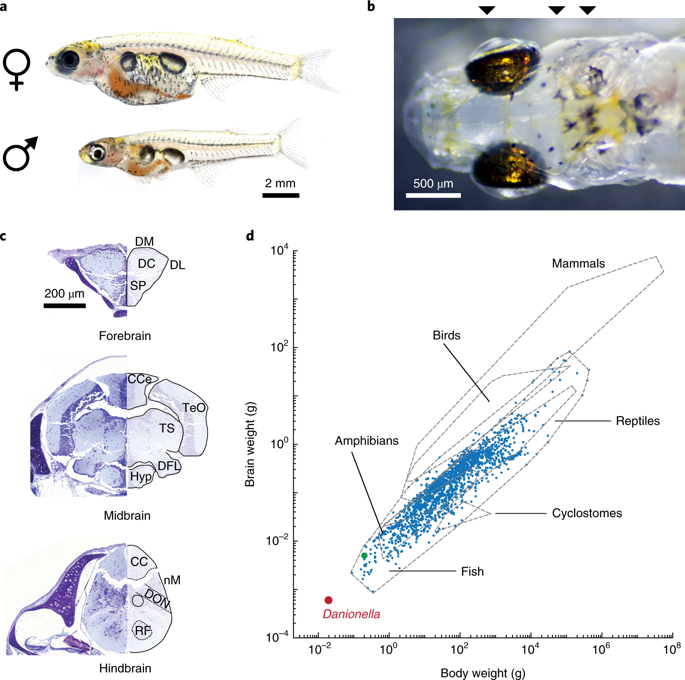Nature Methods ( IF 48.0 ) Pub Date : 2018-10-15 , DOI: 10.1038/s41592-018-0144-6 Lisanne Schulze , Jörg Henninger , Mykola Kadobianskyi , Thomas Chaigne , Ana Isabel Faustino , Nahid Hakiy , Shahad Albadri , Markus Schuelke , Leonard Maler , Filippo Del Bene , Benjamin Judkewitz

|
Understanding how distributed neuronal circuits integrate sensory information and generate behavior is a central goal of neuroscience. However, it has been difficult to study neuronal networks at single-cell resolution across the entire adult brain in vertebrates because of their size and opacity. We address this challenge here by introducing the fish Danionella translucida to neuroscience as a potential model organism. This teleost remains small and transparent even in adulthood, when neural circuits and behavior have matured. Despite having the smallest known adult vertebrate brain, D. translucida displays a rich set of complex behaviors, including courtship, shoaling, schooling, and acoustic communication. In order to carry out optical measurements and perturbations of neural activity with genetically encoded tools, we established CRISPR–Cas9 genome editing and Tol2 transgenesis techniques. These features make D. translucida a promising model organism for the study of adult vertebrate brain function at single-cell resolution.
中文翻译:

透明丹参菌作为可遗传控制的脊椎动物脑模型
了解分布式神经元回路如何整合感觉信息并产生行为是神经科学的中心目标。但是,由于脊椎动物的大小和不透明性,很难在整个成年大脑中以单细胞分辨率研究神经元网络。我们在这里通过将透明质感丹氏杆菌鱼介绍给神经科学作为一种潜在的模式生物来解决这一挑战。即使在成年期,当神经回路和行为成熟时,这种硬骨鱼仍然很小且透明。尽管已知的成年脊椎动物脑最小,但D. translucida显示一系列复杂的行为,包括求爱,浅滩,学校教育和声音交流。为了使用遗传编码工具进行光学测量和神经活动的扰动,我们建立了CRISPR–Cas9基因组编辑和Tol2转基因技术。这些特征使半透明梭状芽孢杆菌成为用于以单细胞分辨率研究成年脊椎动物脑功能的有希望的模式生物。


























 京公网安备 11010802027423号
京公网安备 11010802027423号